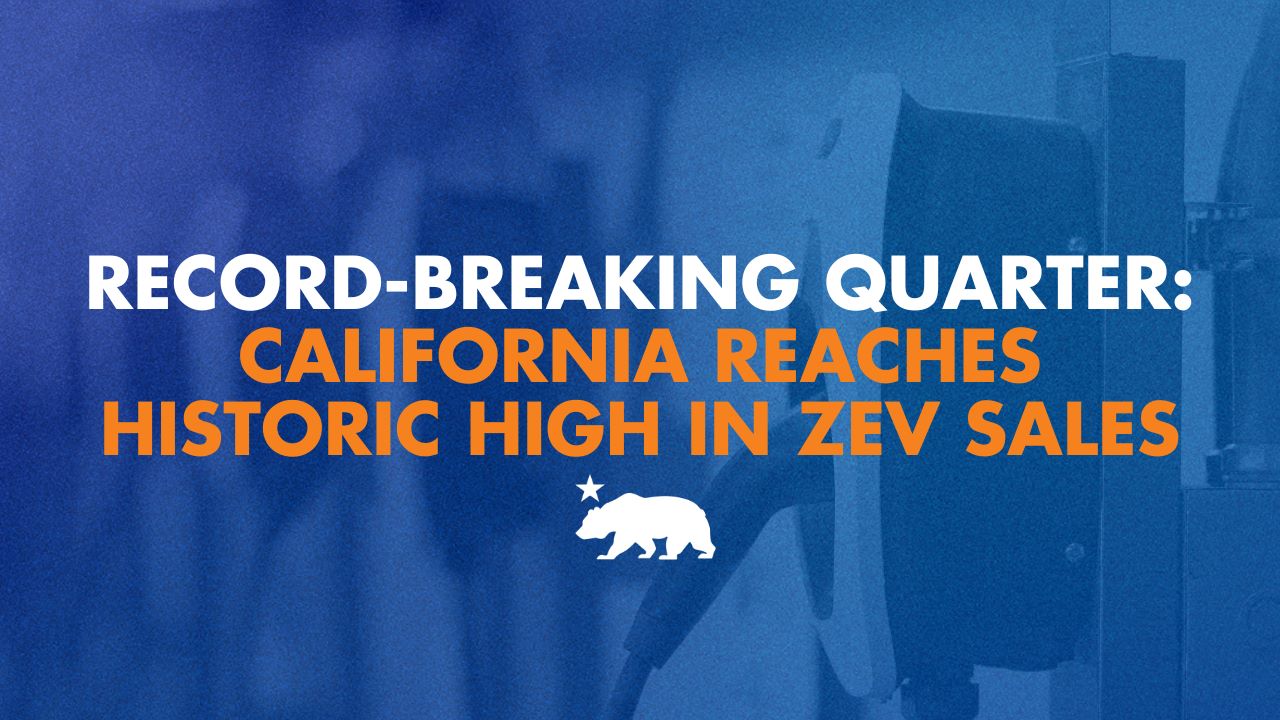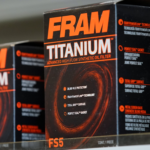Official website of the State of California
CA.gov
Resources for California
News
Oct 13, 2025
What you need to know: California’s demand for zero-emission vehicles (ZEVs) is surging despite federal attempts to derail the Golden State’s pursuit of a 100% clean energy future. A record 29.1% of all new cars purchased in the third quarter of 2025 were ZEVs.
SACRAMENTO – Today, Governor Gavin Newsom announced that Californians purchased 124,755 zero-emission vehicles (ZEVs) in the third quarter of 2025, representing 29.1% of new car sales, the highest quarterly sales share ever reported in California. Despite the efforts by the Trump administration to derail the ZEV industry and raise the cost of a clean car , Californians made it clear they want to drive ZEVs as they scooped up the remaining federal tax credits that expired at the end of last month.
This historic accomplishment builds on the Governor’s announcement earlier this week that California has added more than 30,000 megawatts of new clean energy and storage capacity since 2019, while virtually eliminating dirty coal from its power supply.
“This is unprecedented – we’re nearing a third of all new vehicles sold in the fourth largest economy on the planet being clean cars. We’re setting new records because this state believes in innovation, not isolation. While Trump sells out American innovation to China, California will keep charging ahead on our path to a future of cleaner air.”
Governor Gavin Newsom
The Q3 2025 sales share of 29.1%, surpasses the previous high of 26.9% set in Q3 2023. Californians have now cumulatively purchased 2,468,158 new ZEVs. Last month, Governor Newsom announced that clean truck sales continued to rise in California in 2024, with manufacturers reporting nearly 1 in 4 trucks, buses, and vans sold were zero emission, meeting the state’s target two years ahead of schedule.
“This is a defining moment for California’s ZEV progress and sends a clear message to Washington: ZEVs are here to stay,” said California Energy Commissioner Nancy Skinner. “The work and investments by the California Energy Commission, and its agency and industry partners, to expand the state’s network of EV chargers has resulted in nearly every Californian living within 10 minutes of an EV fast charger. Now, new EV owners can enjoy a great driving experience bidding goodbye to smelly gas stations, messy oil changes, and costly engine tune-ups.”
The ZEV market is also diversifying in California, with 146 ZEV models available in Q1, up from 105 models in Q1 of last year. Of the 124,755 ZEVs purchased in Q3, 108,685 of those were EVs. This is also a record for California, with EV sales spiking nearly 30% over Q2 2025.
“While the federal government stumbles backward with reckless rollbacks and short-sighted policies, California charges ahead lighting the path to a cleaner, more prosperous future,” said California Air Resources Board Chair Lauren Sanchez. “From pioneering clean transportation in the 1970s to setting today’s bold climate plan, we’ve proven time and again that protecting air quality and the climate isn’t just the right thing to do, it’s smart economic policy. As the world’s 4th largest economy and a global beacon of clean energy innovation, California isn’t waiting for permission to lead — we’re too busy building the future.”
California’s support for clean cars is unmatched. Despite federal headwinds, California has doubled down on improving the state’s charging network and making it easier than ever to own a ZEV:
California is tearing down barriers to ZEV deployment, speeding up EV charging station installations, and deploying infrastructure in hard-to-reach and low-income areas.
While qualifying for federal ZEV incentives contributed to the sales spike this quarter, becoming an EV driver in California is increasingly getting easier. There are now over 200,000 publicly accessible EV charging stations statewide. EV chargers can be found at grocery stores, park and ride lots, and even gas stations, whereas shared EV chargers can be found at apartment complexes, workplaces, doctors’ offices, sports facilities, and other parking areas that may have some level of restricted access. This statewide network of public and shared private EV chargers is in addition to the estimated 800,000 EV chargers installed in single-family homes.
Pollution is down and the economy is up. Greenhouse gas emissions in California are down 20% since 2000 – even as the state’s GDP increased 78% in that same time period all while becoming the world’s fourth largest economy.
The state also continues to set clean energy records. California was powered by two-thirds clean energy in 2023, the latest year for which data is available – the largest economy in the world to achieve this level of clean energy. The state has run on 100% clean electricity for some part of the day almost every day this year.
Since the beginning of the Newsom Administration, battery storage is up to over 15,000 megawatts – a 1,900%+ increase, and over 30,000 megawatts of new resources have been added to the electric grid.
Press releases, Recent news
Oct 13, 2025
News What you need to know: Governor Newsom signed legislation to further protect children online and address emerging threats as technology continues to develop — maintaining the state’s position as a national leader in both safeguarding kids and encouraging…
Oct 12, 2025
News What you need to know: Adding to the already robust network of laws that help children and families feel safe at school, Governor Newsom today signed into law legislation to bring those same protections to licensed childcare facilities and preschools. SACRAMENTO…
Oct 11, 2025
News SACRAMENTO – Governor Gavin Newsom today announced that he has signed the following bills:AB 14 by Assemblymember Gregg Hart (D-Santa Barbara) – Coastal resources: Protecting Blue Whales and Blue Skies Program.AB 79 by Assemblymember Dr. Joaquin Arambula…
Powered by: CAWeb Publishing Service
© Copyright












